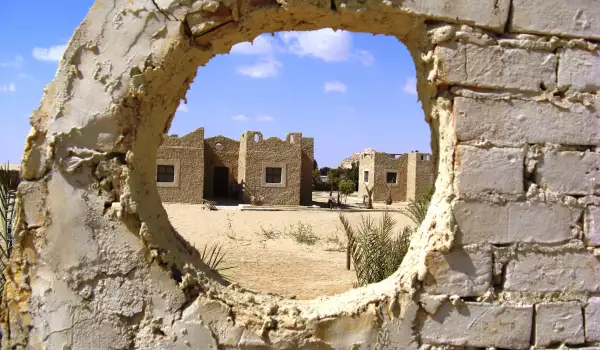Siwa Oasis

The area of the oasis Siwa is a rather small habitable area, located amidst the western Egyptian desert and is located 550 km away on the desert route from the capital Cairo. From the Libyan border the remote spot is only about 50 km away which is on route to the capital, Cairo.
Travel agencies offer this excursion as part of their packages. Another option is to rent a car, but it is risky if you are not familiar with the rules of the road in the country. Opportunities by taxi and bus are always secure.
Siwa, which is only 80 km long and 20 km wide is an isolated small oasis where the Zeitgeist and traditions have managed to be preserved to a large extent. Siwa is inhabited by nearly 23, 000 people of mostly ethnic Berbers who speak different dialects. For a small size Siwa has managed to become a relatively large tourist center. Alcohol is totally banned and women must be veiled with their traditional cloak. Foreign women here had better also be covered to avoid annoying the local population. The main thing to eat there are dates.

The town itself is built around Shalit which is an old place and was built of bricks in the 13th century and surrounded by walls that were designed to protect people from enemy attacks. With the increase in population over the years, people have decided instead to build retaining walls outside the city to build inside their higher buildings of which some of them reach up to 5 floors.
Within the town it has a colorful market, where you can find antique silverware and rare embroidered fabrics. This place is popular and is overwhelmed with plaited baskets and their ceramic vessels.
One of the tourist attractions in Siwa is a traditional museum, House of Siwa Museum. It was built by a former Canadian ambassador who wanted to preserve the distinctive culture of this place.
In 2007 this part of the Egyptian desert was marked as the oldest trace of the human foot whose age according to record estimates around 2 million years. It is perhaps the most important discovery ever made by Egyptian scientists.
Archaeologists found the footprint in the mud fossils, which were discovered with residues of plant origin. It may be that he is older than the famous fossil which partially preserved the skeleton of an ape-man aged at about 3 million years and was opened in 1974 in Ethiopia. The earliest evidence of human presence on the territory of Egypt found so far was 200, 000 years ago.















